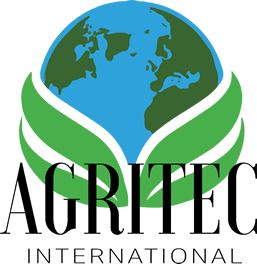In the realm of farming, productivity extends beyond merely cultivating crops; it greatly hinges on the efficiency of the harvest. An optimized harvest process can yield higher produce, significantly reduce waste, and subsequently improve overall profitability. Harvest efficiency, as a concept, pertains to reaping maximum output from your crops in the least possible time, with minimal waste. It encompasses not just efficient techniques, but also optimal timing, lending to its complex and multifaceted nature. The effectiveness of your harvesting operations can be measured by comparing the potential yield, which is the theoretical maximum your field could produce, to the actual yield, the amount you successfully harvested.
Efficiency-Boosting Techniques: Time-Saving Methods and Agricultural Innovations
There are several methods available to farmers to improve their harvest efficiency, ranging from time-saving techniques to innovative machinery. For instance, adopting multi-row harvesting techniques allows machinery to handle several rows at once, dramatically reducing time spent. Furthermore, consolidating operations using machinery that can both cut and sort your crops can lead to significant labor and time savings. The world of modern farming offers a plethora of tools that can contribute to harvest efficiency. Consider innovative machinery such as GPS-guided combines, auto-steer tractors, and yield monitors, all of which not only save time but also ensure precision, leading to a greater yield.
Effective Crop Rotation and Precision Agriculture
Another untapped secret to efficient harvesting lies in the strategic use of crop rotation. This method, which involves planting different crops in a cycle, can improve soil fertility, disrupt pest cycles, and make harvesting more efficient. Crop rotation can also stagger your harvest times, spreading the workload more evenly throughout the year. Simultaneously, the field of precision agriculture has a crucial role to play in enhancing harvest efficiency. This approach leverages technology to optimize returns on inputs while preserving resources, employing technologies like GIS and remote sensing to control and monitor crop variables. This not only saves resources but also ensures more efficient harvests.
Strategic Planning and Post-Harvest Techniques
Efficient harvesting also mandates strategic planning. The optimal timing for harvest can vary considerably between different crops and even within a single field. Utilizing data and forecasting tools, farmers can create an ideal harvest schedule that ensures the maximum yield. But the journey doesn’t end with harvesting; it’s equally crucial to implement effective post-harvest handling techniques to safeguard your yield. This includes proper storage, efficient cooling methods, and robust transport systems, all of which help to prevent losses from spoilage and ensure that your harvested crops reach the market in the best possible condition.
Leveraging Technology for Harvest Efficiency
In the modern era, technology offers a wealth of opportunities to streamline and enhance harvesting processes. Digital tools that offer real-time insights into crop health, weather forecasts, and soil conditions can inform decisions and improve outcomes. Furthermore, machine learning algorithms can analyze historical data to predict the best harvest times, taking some of the guesswork out of the process and increasing efficiency. Leveraging these digital tools can result in more data-driven and efficient farming practices, offering significant improvements to yield and profitability.
The Impact of Fertilizer and Soil Amendment Programs on Yields and Harvests
The health and fertility of the soil in your fields play a pivotal role in determining your harvest efficiency. Proper soil management through fertilizers and soil amendment programs can significantly boost yields and improve harvest efficiency.
Understanding your soil’s needs is paramount. Regular soil testing can provide a wealth of information about its nutrient content, pH level, and other crucial factors. This understanding allows you to tailor your fertilizer and soil amendment program to your soil’s specific needs, ensuring your crops get exactly what they need to grow and produce at their best.
Among the variety of soil amendments available, one key component that has shown to have a significant impact on soil health and crop yield is calcium. This vital nutrient plays an essential role in plant growth and development. It aids in the formation of cell walls, helping the plant form stronger stems, leaves, and roots, thereby increasing its ability to withstand stresses and grow more vigorously.
One innovative approach to supplying calcium is through the use of liquid calcium products. These products have the advantage of being highly bioavailable, meaning they can be absorbed and utilized by the plant more effectively than traditional forms of calcium. Moreover, they are easy to apply and can be used in precision farming techniques to deliver exactly the right amount of calcium to each part of your field.
In essence, a properly implemented fertilizer and soil amendment program, including the use of high-quality liquid calcium, can greatly enhance the fertility of your soil, resulting in healthier plants, increased yields, and ultimately, more efficient harvests.
Conclusion: The Future of Harvest Efficiency
The future of efficient harvesting in sustainable agriculture hinges on our ability to embrace new techniques, leverage innovative technologies, and adopt a data-driven approach. By implementing these strategies, we can ensure higher yields, reduce waste, and contribute to feeding our growing global population. Remember, the future of farming is not about working harder, but smarter. With these insights, farmers at every scale of operation can enhance their harvest efficiency and promote more profitable and sustainable agricultural practices.


